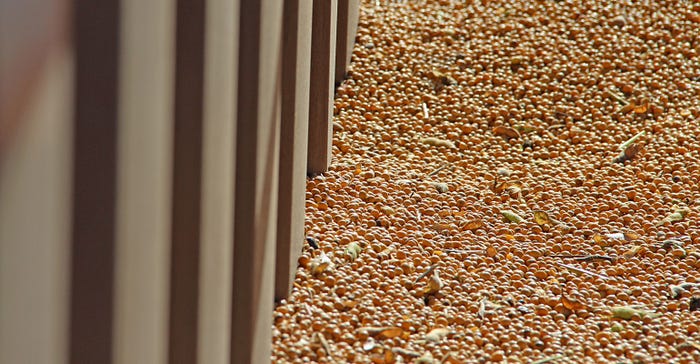
High production costs, rising interest rates, and volatile commodity markets create a conundrum for farmers as they prepare to harvest the 2022 crop and begin making plans for 2023.
Much of the challenge comes from issues beyond farmers’ control, said University of Tennessee Associate Professor and Extension Economist Aaron Smith.
“Input prices continue to be influenced by supply chain disruptions, labor shortages, inflation, and high energy prices,” Smith said. “Prices for fertilizer and diesel were amplified by Russia’s invasion of Ukraine.”
He said some costs, such as Urea, have dipped a bit. “But substantial volatility and uncertainty remain in the market, and input prices are likely to remain elevated into 2023.”
Weather could make things worse. “Potential for an active hurricane season in the gulf could quickly escalate issues in fuel and fertilizer markets,” Smith said.
He suggests that producers look for ways to minimize risk, without sacrificing profit potential.
“In county meetings, we’ve been talking about laying off a little risk when purchasing inputs,” Smith said. “Try to avoid getting margin-squeezed.”
He said fertilizer prices, although costs have come down some, remain substantially higher than in recent years. “Consider how many bushels of sales you want to price to mitigate input purchase risk. It will also depend on commodity prices but try to mitigate risk. The key is to avoid paying high prices for inputs and then having to sell commodities at lower prices. It’s an input hedge to prevent huge margin squeezes.” He adds that when producers purchase inputs might make a difference in how they approach price risk management.
Interest rate hikes
Adding to those rising costs will be the end of low interest rates — at least in the short term.
“Cost of capital is an increasing concern for producers as the Federal Reserve increases interest rates to combat 40-year highs in inflation,” Smith said. “Access and the price of capital for 2023 could be a major challenge for producers with the combination of elevated interest rates and expensive inputs. Producers should contact lenders early to discuss financing options for 2023. Look at what make sense.”

He said intermediate and long-term credit with fixed interest rates is likely in place for most producers. Operating loans with variable interest rates could be worrisome, however.
“Look at strategies to secure substantial savings for operating capital for 2023,” Smith said. “Variable interest rates pose rate hike risks. Securing a fixed rate loan for operating costs could mitigate rising interest rates for some producers.”
All alternatives for financing should be examined. Input providers, for instance, could be sources for operating loans. Producers need to run the numbers to find out the least-cost alternative for obtaining 2023 financing.
Volatile markets
Uncertainty in costs and markets makes 2023 budgeting a perplexing issue. Smith said producers should consider potential for weaker commodity markets. “Crop prices have pulled back dramatically since early June,” Smith said. “For example, wheat futures are now below pre-Russia-Ukraine war levels.
“U.S. and global production estimates have increased in the past two months due to improved weather forecasts; however, a lot of the pull-back in commodity prices is due to forces external to agricultural production — economic uncertainty/recession concerns, a strong USD (dollar index) is at its highest point since 2002, which will provide headwinds for exports.”
He said cotton, corn and soybean prices have weakened. “The collapse in prices has tightened producers’ margins or turned them negative, adversely affecting producers who failed to take advantage of price protection in May and June.”
Smith said crop insurance prices offer some base level protection. “Moving forward, projected crop insurance prices for corn at $5.90, cotton at $1.03, and soybeans at $14.33 provide a base level of protection that exceeds current futures market offerings.”
Aggressive marketing strategies
He said producers might want to be a bit more aggressive with marketing, looking ahead to 2023 and 2024. Uncertainty remains for 2022 crop production, Smith adds, so markets will remain in flux.
“Producers need to evaluate how much they have priced relative to projected production, storage availability, and potential marketing strategies that provide price protection (up or down). Volatility is likely to remain a feature in commodity markets during these uncertain times.
“It will be worthwhile for producers to look at 2023 and 2024 marketing opportunities they are comfortable with. We are getting massive swings in commodity markets. Familiarize yourself with marketing tools or find a knowledgeable broker. We want to be a little more aggressive than usual with the time horizon for markets. If producers do not act, opportunities pass quickly.”
Management practices
Smith said uncertainty also calls for hard looks at management. “Evaluate production costs. Always consider farm-by-farm and field-by-field to determine where inputs get the most bang for the buck.”
He said cutting back can be a dangerous undertaking and risks losing production and profit. “But producers should identify fields where they can justify pulling back a little without sacrificing yield.”
He adds that sticking to some basic principles is crucial in uncertain times. “Soil test. Know field pH levels. Adjusting pH is a reasonably inexpensive way to improve pasture fertility.
“Those kinds of management practices are extremely important during challenging markets. Get the most out of expensive inputs. Know which fields offer the best responses to inputs. Evaluate materials at your disposal.”
Smith said access to some nutrients may be limited. Alternatives like poultry litter could fill in some gaps. “Poultry litter is a good option in conjunction with commercial fertilizers. Find where you can source it and where the best location is to apply it.”
An uncertain economy, volatile markets, and high production costs challenge producers’ management skills, Smith said. Watching costs, looking for favorable pricing opportunities, making financing arrangements earlier than usual, and taking advantage of short-and long-range marketing opportunities will improve the odds of managing the chaotic economic climate.
About the Author(s)
You May Also Like






